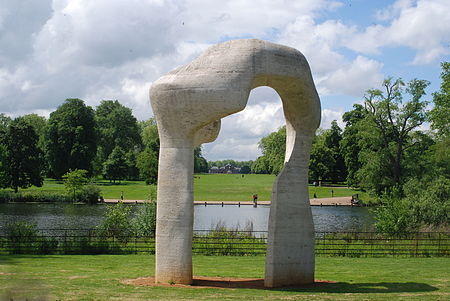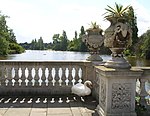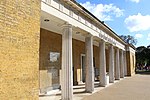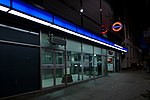The Arch 1979–1980

The Arch 1979–1980 is a large stone sculpture by Henry Moore located in Kensington Gardens, London. It was given to the park by Moore in 1980. "After the 1978 exhibition at the Serpentine Gallery in London, in which several large pieces were located in Kensington Gardens, there was a request for me to leave a sculpture there permanently, which I agreed to do. I thought the Large Arch was very naturally sited, particularly as it could be seen reflected in the water from across the lake. During the exhibition, many people believed the sculpture to be made of marble, but in fact it was a fibreglass exhibition cast made originally for my exhibition at the Forte di Belvedere in Florence (1963), because of the difficulty of getting a very heavy bronze or marble on to the site. Therefore, so that it could be left as a permanent sculpture in Kensington Gardens, I produced a version in travertine marble which is a very lasting material."The Arch was found to be unstable in 1996, and was subsequently dismantled and placed into storage. It was restored and replaced in its original location in 2012.
Excerpt from the Wikipedia article The Arch 1979–1980 (License: CC BY-SA 3.0, Authors, Images).The Arch 1979–1980
West Carriage Drive, London Knightsbridge
Geographical coordinates (GPS) Address External links Nearby Places Show on map
Geographical coordinates (GPS)
| Latitude | Longitude |
|---|---|
| N 51.507497222222 ° | E -0.17314166666667 ° |
Address
The Arch
West Carriage Drive
W2 2AR London, Knightsbridge
England, United Kingdom
Open on Google Maps










